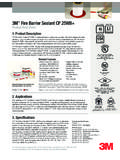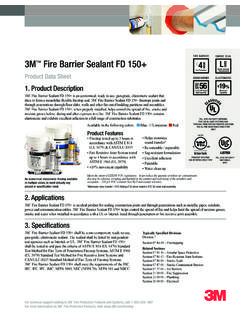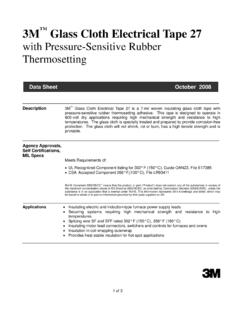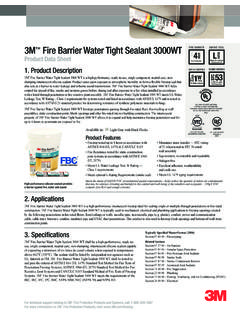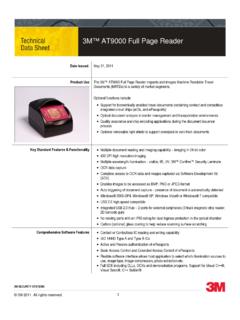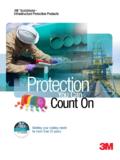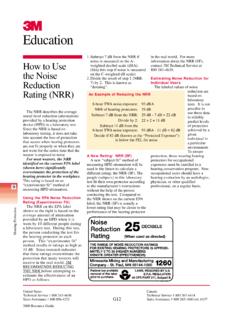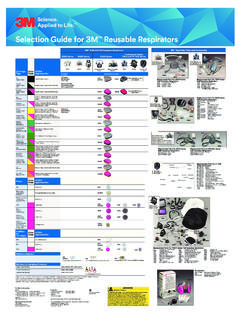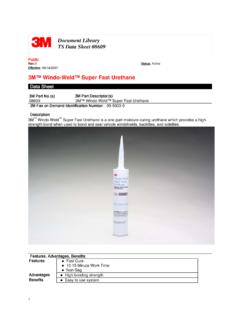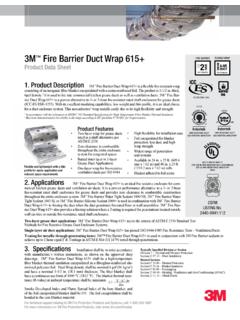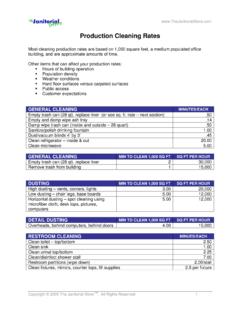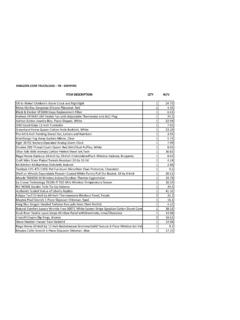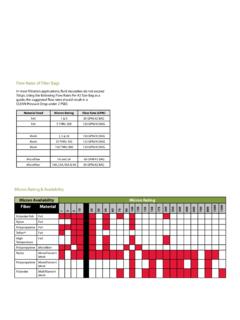Transcription of Environmental Cleaning and Disinfection
1 70 February 2010 Trainingby Rose Seavey, RN, BS, MBA, CNOR, CRCST, CBSPD Environmental Cleaning and DisinfectionIN THE OR AND OTHER INVASIVE PROCEDURE is an Environmental Protection Agency (EPA)-registered disinfectant and can be used to clean largeenvironmental True B. turning over a room for the next procedure it is onlynecessary to clean a 3-ft to 4-ft perimeter around thesurgical field when it is visibly True B. that would not release blood or other potentiallyinfectious materials (OPIM) in a liquid or semi-liquidstate if compressed, or are not caked with dried blood orOPIM are considered noninfectious and should be placedin a separate container designated for regular or non-infectious True B. surgical or invasive procedure rooms, including unused rooms, should also be cleaned once during each 24hour period throughout the facility s regularly scheduledwork True B.
2 Machines that use a scoop are preferred over True B. procedures identified as contaminated or dirty-infected(cases classified as class III or IV) require extraordinarycleaning procedures and closure of the operating True B. difficileis transmitted typically through handcontact with surfaces contaminated with True B. instruments used on Creutzfeld Jakob Disease(CJD) cases should be placed in biohazard sharps boxesand True B. FalseIntroductionPatient safety is a huge initiative in today s healthcareworld. Reducing healthcare-associated infections (HAIs) is Many thanks to the team at 3M Health Care forworking with provide the followingaccredited course. IAHCSMM has awarded 1 contactpoint for completion of this continuing educationlesson toward IAHCSMM recertification.
3 The CBSPDhas preapproved this inservice for 1 contact hour for aperiod of five (5) years from the date of publication,and to be used only once in a recertification inservice is 3M Health Care Provider approved bythe California Board of Registered Nurses, CEP 5770for 1 contact hour. This form is valid up to five (5)years from the date of publication. Instructions forsubmitting results are on page 84. 3M Health Care will beworking collaboratively to provide continuing educa-tion courses in monthly editions of completion of this self-study activity, the learnerwill be able current recommended practices for environ-mental Cleaning in the perioperative the importance of Environmental Cleaning proto-cols for the surgical practice precautionary measures that help to limit trans-mission of microorganisms when performing routineenvironmental Cleaning and Disinfection the information to be covered in policies QuestionsTrue or perioperative nurse is responsible for verifying the surgical environment is clean and True B.
4 All surgical procedures are considered True B. False71 February 2010 major goal of patient safety. In the perioperative arena a largefocus is on decreasing the risk of surgical site infections (SSIs). One essential part of that effort is to provide a safe and clean environment where surgical or invasive procedures are and invasive procedures are performed in traditionaloperating rooms (OR) and ambulatory surgery centers (ASC) as well as many other settings such as, physician offices, cardiac catheterization suites, endoscopy suites, and radiologydepartments. Consistent and thorough Cleaning and disinfectionpractices will minimize the patient s and healthcare worker s risk of exposure to potentially infectious microorganisms.
5 (AORN Purpose)1 Regular Cleaning and Disinfection decreases the amount ofdust, organic debris, and microorganisms in the environment. Following scientifically based recommendations for cleaningand Disinfection practices in health care organizations helps toreduce infections associated with contaminated items. Manystudies have documented that failure to comply with scientifi-cally based recommendations has led to infection outbreaks. (AORN Recommendation II General Statement)1 Environmental Cleaning and Disinfection is a Team EffortA critical responsibility for any healthcare provider is minimizing patient risks. Providing and maintaining a clean andsafe environment takes a collaborative effort between periopera-tive nurses, surgical technicians, surgical patient care assistants, Environmental services (EVS) personnel, and infection preven-tion and control (IPC) professionals.
6 Policies, procedures andguidelines related to Environmental Cleaning should be createdand established in partnership with the OR, EVS and IPC.(AORN Recommendation X General Statement)1 The safety of patients undergoing operative or other invasive procedures is the primary responsibility of the perioper-ative registered nurse. 2 Therefore, perioperative nurses shouldbe well versed in the facility s policies and procedures regardingenvironmental Cleaning in the perioperative Cleaning and Disinfection is a team effort,however; The responsibility for verifying a clean surgical environment rests with the perioperative nurses. ( AORNR ecommendation )1 Before case carts, supplies, equipmentand instruments are brought in, the OR/procedure room shouldbe visually inspected for the absence of visible dust, debris, soilor body substances.
7 (AORN Recommendation )1 Recommended PracticesThe Association of periOperative Registered Nurses(AORN) provides detailed guidance for effective and efficientenvironmental Cleaning and Disinfection in the surgical practicesetting. These can be found in the Recommended Practices (RP)Education& Trainingfor Environmental Cleaning in the Perioperative recommendations are a great resource for all surgicalor invasive procedure RP was newly revised in 2007 and was thenpublished in the 2008 edition of the AORN perioperativestandards and recommended practices. Like all of theAORN RPs, this one was developed by the AORN recommended practices committee and approved by theBoard of Directors. All AORN RPs are intended to beattainable recommendations for a best level of practice.
8 (AORN Introduction)1 Decreasing Sources of SSI In anatomy and physiology 101 we learned that skin isthe body s first line of defense. Therefore, any breach of a patient s skin could potentially result in an , all surgical procedures should be consideredpotentially are many sources of pathogens that may cause SSI. Pathogenic sources, other than the patient,include personnel, equipment, instruments, supplies and the environment ( including the air) . ( AORN GeneralStatement)1 Many HAIs have been found to be linked toexternal surfaces such as Environmental organisms have the ability to survive on envi-ronmental surfaces and are easily transmitted to many otherareas. (AORN Recommendation I General Statement)1 End of Procedure Cleaning vs.
9 Terminal Cleaning All patients should have a clean and safe , in addition to daily Cleaning , operating roomsshould be cleaned after each surgical or invasive that is performed at the end of one surgical proce-dure and before the start of another procedure in that sameroom is referred to as end of procedure Cleaning , room turn-over, or between case Cleaning . Cleaning that is performedat the conclusion of the surgical practice setting dailysurgery schedule is referred to as terminal and DisinfectionEnsuring the environment is clean and safe requiresmethods for both Cleaning and Disinfection . Cleaning isdefined as a process using friction, detergent and water toremove organic debris; the process by which any type ofsoil, including organic debris is removed.
10 It is important tonote that Cleaning removes but does not kill microorgan-isms. Disinfection is defined as a process that kills most forms of microorganisms on inanimate destroys pathogenic organisms ( excludingbacterial spores) or their toxins or vectors by direct expo-sure to chemical or physical means. (AORN Glossary)172 February 2010 Trainingconstructed, polyester and nylon fibers. The microfibers arepositively charged making them draw or attract dust which isnegatively charged. Microfiber mops are more absorbent thanthe traditional cotton-loop mop mops canendure up to 300 washings and weigh about two pounds versesthe conventional string mops that weigh about 10 microfiber mops may help decrease personnelinjuries.
